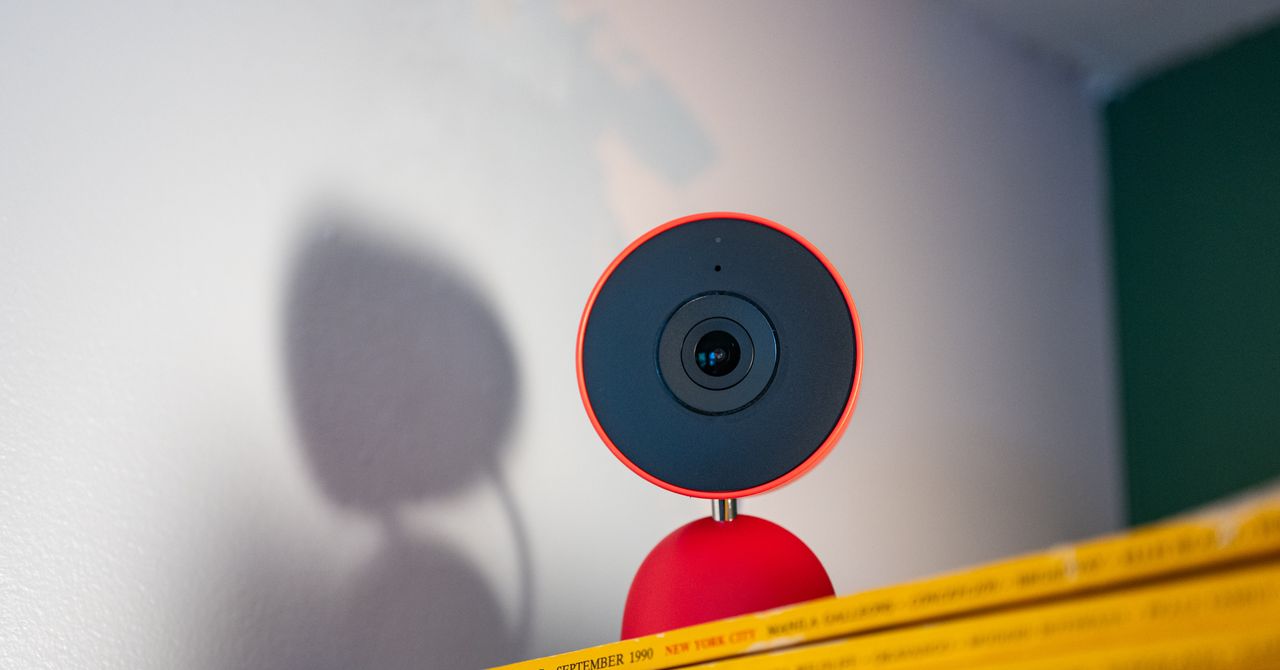Tech
Gemini in Google Home Keeps Mistaking My Dog for a Cat

A cat jumped up on my couch. Wait a minute. I don’t have a cat.
The alert about the leaping feline is something my Google Home app sent me when I was out at a party. Turns out it was my dog. This notification came through a day after I turned on Google’s Gemini for Home capability in the Google Home app. It brings the power of large language models to the smart home ecosystem, and one of the most useful features is more descriptive alerts from my Nest security cameras. So, instead of “Person seen,” it can tell me FedEx came by and dropped off two packages.
In the two weeks since I allowed Gemini to power my Google Home, I’ve enjoyed its ability to detect delivery drivers the most. At the end of the day, I can ask in the Google Home app, “How many packages came today” and get an accurate answer. It’s nice to know that it’s FedEx at the door, per my Nest Doorbell, and not a salesperson offering to replace my windows. Yet for all its smarts, Gemini refuses to understand that I do not have a cat in my house.
Person Seen
ScreenshotGoogle Home via Julian Chokkattu
Google isn’t the only company souping up its smart-home ecosystem with AI. Amazon recently announced a feature on its Ring cameras called Search Party that will use a neighborhood’s worth of outdoor Ring cameras to help someone find their lost dog. (I don’t need to stretch to imagine something like this being used for nefarious purposes.)
In early October, Google updated the voice assistant on its smart-home devices—some of which have been around for a decade—by replacing Google Assistant with Gemini. For the most part, the assistant is better. It can understand multiple commands in a spoken sentence or two, and you can very easily ask it to automate something in your home without fussing with the Routines tab in the Google Home app. And when I ask it a simple question, it generally gives me some kind of a reliable answer without punting me to a Google Search page.
Smarter camera alerts are indeed more helpful at a glance. Most of the time, I dismissed Person Seen notifications because they’re often just people walking by my house. Now the alerts actually say “Person walks by,” which gives me greater confidence to dismiss those. Some alerts accurately say “Two people opened the gate,” though sometimes it will hallucinate: “Person walks up stairs,” when no one actually did. (They just walked on the sidewalk.) It has fairly accurately noted when UPS, FedEx, or USPS are at the door, which is nice to know when I’m busy or out and about, so I can make sure to check for a package when I get home—no need to hunt through alerts.
But with my indoor security cameras, Gemini routinely says I have a cat wandering the house. It’s my dog. Even in my Home Brief—recaps at the end of the day from Gemini about what happened around the home—Gemini says, “In the early morning, a white cat was active, walking into the living room and sitting on the couch.” It’s amusing, especially considering my dog hates cats.
CatDog
ScreenshotGoogle Home via Julian Chokkattu
You would think then that I would be able to just tell this smarter assistant, “Hey, I don’t have a cat. I have a dog,” and it would adjust its models and fix the error. Well, I did exactly that. In the Ask Home feature, you can talk to Gemini and ask it anything about the home. This is where you can ask it to set up automations, for example. I asked it to turn on the living room lights when the cameras detect my wife or I arriving home, and it understood the action. It even guessed that I wanted the lights to come on only when arriving at night, despite me forgetting to mention that.
Tech
Security News This Week: Oh Crap, Kohler’s Toilet Cameras Aren’t Really End-to-End Encrypted

An AI image creator startup left its database unsecured, exposing more than a million images and videos its users had created—the “overwhelming majority” of which depicted nudes and even nude images of children. A US inspector general report released its official determination that Defense Secretary Pete Hegseth put military personnel at risk through his negligence in the SignalGate scandal, but recommended only a compliance review and consideration of new regulations. Cloudflare’s CEO Matthew Prince told WIRED onstage at our Big Interview event in San Francisco this week that his company has blocked more than 400 billion AI bot requests for its customers since July 1.
A new New York law will require retailers to disclose if personal data collected about you results in algorithmic changes to their prices. And we profiled a new cellular carrier aiming to offer the closest thing possible to truly anonymous phone service—and its founder, Nicholas Merrill, who famously spent a decade-plus in court fighting an FBI surveillance order targeted at one of the customers of his internet service provider.
Putting a camera-enabled digital device in your toilet that uploads an analysis of your actual bodily waste to a corporation represents such a laughably bad idea that, 11 years ago, it was the subject of a parody infomercial. In 2025, it’s an actual product—and one whose privacy problems, despite the marketing copy of the company behind it, have turned out to be exactly as bad as any normal human might have imagined.
Security researcher Simon Fondrie-Teitler this week published a blog post revealing that the Dekota, a camera-packing smart device sold by Kohler, does not in fact use “end-to-end encryption” as it claimed. That term typically means that data is encrypted so that only user devices on either “end” of a conversation can decrypt the information therein, not the server that sits in between them and hosts that encrypted communication. But Fondrie-Teitler found that the Dekota only encrypts its data from the device to the server. In other words, according to the company’s definition of end-to-end encryption, one end is essentially—forgive us—your rear end, and the other is Kohler’s backend, where the images of its output are “decrypted and processed to provide our service,” as the company wrote in a statement to Fondrie-Teitler.
In response to his post pointing out that this is generally not what end-to-end encryption means, Kohler has removed all instances of that term from its descriptions of the Dekota.
The cyberespionage campaign known as Salt Typhoon represents one of the biggest counterintelligence debacles in modern US history. State-sponsored Chinese hackers infiltrated virtually every US telecom and gained access to the real-time calls and texts of Americans—including then presidential and vice-presidential candidates Donald Trump and J.D. Vance. But according to the Financial Times, the US government has declined to impose sanctions on China in response to that hacking spree amid the White House’s effort to reach a trade deal with China’s government. That decision has led to criticism that the administration is backing off key national security initiatives in an effort to accommodate Trump’s economic goals. But it’s worth noting that imposing sanctions in response to espionage has always been a controversial move, given that the United States no doubt carries out plenty of espionage-oriented hacking of its own across the world.
As 2025 draws to a close, the nation’s leading cyberdefense agency, the Cybersecurity and Infrastructure Agency (CISA), still has no director. And the nominee to fill that position, once considered a shoo-in, now faces congressional hurdles that may have permanently tanked his chances to run the agency. Sean Plankey’s name was excluded from a Senate vote Thursday on a panel of appointments, suggesting his nomination may be “over,” according to CyberScoop. Plankey’s nomination had faced various opposition from senators on both sides of the aisle with a broad mix of demands: Florida’s Republican senator Rick Scott had placed a hold on his nomination due to the Department of Homeland Security (DHS) terminating a Coast Guard contract with a company in his state, while North Carolina’s GOP senators opposed any new DHS nominees until disaster relief funding was allocated to their state. Democratic senator Ron Wyden, meanwhile, has demanded CISA publish a long-awaited report on telecom security prior to his appointment, which still has yet to be released.
The Chinese hacking campaign centered around the malware known as “Brickstorm” first came to light in September, when Google warned that the stealthy spy tool has been infecting dozens of victim organizations since 2022. Now CISA, the National Security Agency, and the Canadian Centre for Cybersecurity jointly added to Google’s warnings this week in an advisory about how to spot the malware. They also cautioned that the hackers behind it appear to be positioned not only for espionage targeting US infrastructure but also potentially disruptive cyberattacks, too. Most disturbing, perhaps, is a particular data point from Google, measuring the average time until the Brickstorm breaches have been discovered in a victim’s network: 393 days.
Tech
Top Vimeo Promo Codes and Discounts This Month in 2025

Remember Vimeo? You probably don’t use it to browse videos the way you might with some other services. But if you landed on this page, there’s a good chance you use it to host your professional portfolio. Or assets for your business. Or your short films. Vimeo has tools other video hosting services simply don’t have, like AI editing tools, on-demand content selling, customizable embeds, and collaborative editing features. And best of all: There are no ads. WIRED has rotating Vimeo promo codes to help you save.
Get 10% Off Annual Plans With This Vimeo Promo Code
No matter what you need for your business or career, when it comes to video, Vimeo’s got multiple plans to suit. And luckily, right now, you can save with a Vimeo promo code—even on the annual plans, which already include 40% in savings. Just use Vimeo coupon code GETVIMEO10 to save 10% on your membership plan.
The Easiest Way to Save 40% on Your Vimeo Plan
Vimeo has a few different membership plans that you can save on. No matter which you go with, the easiest way to save a lot is with an annual membership, which has automatic 40% savings compared to paying monthly. And yes, you can even stack promo codes with the annual billing options.
More on Vimeo Pricing and Membership Plans
So what tier do you need? The Starter plan starts at $12 per month (billed annually) or $20 per month (billed monthly). It comes with 100 gigabytes of storage, plus boosted privacy controls, custom video players, custom URLs, and automatic closed captioning.
Boost your plan to Standard for $25 per month (billed annually) or $41 per month (billed monthly) to upgrade to 2 terabytes of storage, 5 “seats” (which are collaborative team member spots), a brand kit, a teleprompter, text-based video editing, AI script generation, and engagement and social analytics.
Finally, there’s the Advanced plan, which costs $75 per month (billed annually) or $125 per month (billed monthly). You’ll get 10 “seats”, 7 terabytes of storage, AI-generated chapters and text summaries, live chat and poll options, plus streaming and live broadcast capabilities.
Use a Vimeo Coupon Code to Get Savings on Vimeo on Demand
Vimeo on Demand is a new way to stream and download movies online. Through Vimeo on Demand, you can rent, buy and subscribe to the best original films, documentaries and series directly from your favorite small business video creators, including The Talent and Wild Magic.
Vimeo Enterprise Solutions 2025
You may have not heard about Vimeo Enterprise, but it’s probably the most essential program for content creators, videographers, and digital media in the workplace in general. From meeting recordings and AI-driven video creation to compliance and distribution, Vimeo Enterprise helps centralize and manage video workflows.
Does Vimeo Have a Free Trial?
While Vimeo doesn’t have a free trial of its paid plans, it does have a free plan with some basic features. Additionally, paid plans can be canceled anytime–within 14 days for an annual subscription, or 3 days for a monthly subscription. You’ll get a full refund if you decide to cancel within the respective timeframes.
Tech
WIRED Roundup: DOGE Isn’t Dead, Facebook Dating Is Real, and Amazon’s AI Ambitions

Leah Feiger: So it’s a really good question actually, and it’s one that I’ve thought about for quite some time. I think if it’s not annoying, I want to read this quote from Scott Kupor, the director of OPM and the former managing partner at Andreessen Horowitz, to be clear, just to remind everyone where people are coming from in this current administration. He posted this on X late last month, and this was part of Reuter’s reporting. So he posts, “The truth is, DOGE may not have centralized leadership under USDS anymore, but the principles of DOGE remain alive and well, deregulation, eliminating fraud, waste and abuse, reshaping the federal workforce, et cetera, et cetera, et cetera.” Which is the exact same, the thing that they’ve been saying this entire time, but it’s all smoke and mirrors, right? It’s like, oh no, no, well, DOGE doesn’t exactly exist anymore. There’s no Elon Musk character leading it, which Elon Musk himself said on the podcast with Joe Rogan last month as well. He’s like, “Yeah, once I left, they weren’t able to pick on anyone, but don’t worry, DOGE is still there.” So it feels wild to watch people fall for this and go like, “DOGE is gone now.” And I’m like, they’re literally telling us that it’s not.
Zoë Schiffer: I think one thing that does feel honestly true is that it is harder and harder to differentiate where DOGE stops and the Trump administration begins because they have infiltrated so many different parts of government and the DOGE ethos, what you’re talking about, deregulation, cost cuttings, zero-based budgeting, those have really become kind of table stakes for the admin, right?
Leah Feiger: I think that’s such a good point. And honestly, by the end of Elon Musk’s reign, something that kept coming up wasn’t necessarily that the Trump administration didn’t agree with DOGE’s ethos at all. It was that they didn’t really agree with how Musk was going about it. They didn’t like that he was stepping on Treasury Secretary Scott Bessent and having fights outside of the Oval Office. That was bad optics and that also wasn’t helping the Trump administration even look like they were on top of it.
-

 Tech6 days ago
Tech6 days agoGet Your Steps In From Your Home Office With This Walking Pad—On Sale This Week
-

 Sports5 days ago
Sports5 days agoIndia Triumphs Over South Africa in First ODI Thanks to Kohli’s Heroics – SUCH TV
-

 Entertainment5 days ago
Entertainment5 days agoSadie Sink talks about the future of Max in ‘Stranger Things’
-

 Fashion5 days ago
Fashion5 days agoResults are in: US Black Friday store visits down, e-visits up, apparel shines
-

 Politics5 days ago
Politics5 days agoElon Musk reveals partner’s half-Indian roots, son’s middle name ‘Sekhar’
-

 Tech5 days ago
Tech5 days agoPrague’s City Center Sparkles, Buzzes, and Burns at the Signal Festival
-

 Sports5 days ago
Sports5 days agoBroncos secure thrilling OT victory over Commanders behind clutch performances
-

 Entertainment5 days ago
Entertainment5 days agoNatalia Dyer explains Nancy Wheeler’s key blunder in Stranger Things 5


.PNG)
















